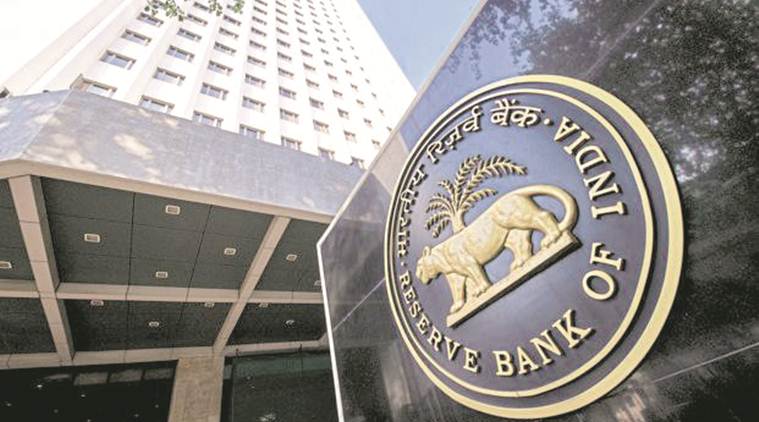Going on a hike
Rate increase by RBI highlights conflict between its role as banking regulator and government’s debt manager

In recent weeks, bond markets in emerging markets have been jittery as the prospect of US rate hike has increased. (File)
In its most recent meeting, the Monetary Policy Committee (MPC) of the RBI raised the policy interest rate for the first time since it was constituted. The MPC expects inflation to be higher than its target of 4 per cent and the statement released by the committee indicates that interest rates may be raised again during the year if necessary.
The prime reason for the rate hike appears to be the increase in the Indian crude oil basket. The monetary policy statement does not point to an increase in the fiscal deficit as one of the risks for why it sees higher inflation, or needs to raise rates. On the fisc, the RBI monetary policy statement says that “the adherence to budgetary targets, which seems to be the case so far, will ease upside risks to the inflation outlook”.
The prime reason for the rate hike appears to be the increase in the Indian crude oil basket. The monetary policy statement does not point to an increase in the fiscal deficit as one of the risks for why it sees higher inflation, or needs to raise rates. On the fisc, the RBI monetary policy statement says that “the adherence to budgetary targets, which seems to be the case so far, will ease upside risks to the inflation outlook”.
Many people have been asking whether the pain of rising in global crude oil prices will be made more palatable in India by a reduction in excise duty by the government. The indication from the RBI is that this will not be the case. If crude oil prices are expected to feed into domestic inflation, while the RBI expects the government to adhere to fiscal targets, it evidently does not expect the fiscal deficit to rise. Hence, it seems that the MPC expects that there will be no excise cut by the Central government. This belief is consistent with the statement by Niti Aayog Vice Chairman Rajiv Kumar, who recently said that since states impose ad valorem duties on fuel, they should cut those, thus indicating that the Centre may not cut excise on fuel.
If the government were to cut excise duty, it would have to borrow more. Government of India bonds, through which the government borrows, have seen increasing yields in recent months. Not only does this mean higher borrowing costs at present, but there also seems to be an unwillingness to hold more Government of India bonds by banks.
Many consumers may be disappointed by the lack of excise duty cuts on petrol and diesel as fuel forms a serious proportion of average household expenditure. However, at the moment, with jitters in the bond markets, at home and abroad, fiscal prudence may be the best bet to avoid not just further inflationary pressures that the RBI refers to, but also the risk of a more serious crisis in financial markets. The ability of the government to borrow at reasonable rates depends on the size of the borrowing programme, depth of the bond market and external financial conditions in both emerging markets and advanced economies, among other factors.
Many consumers may be disappointed by the lack of excise duty cuts on petrol and diesel as fuel forms a serious proportion of average household expenditure. However, at the moment, with jitters in the bond markets, at home and abroad, fiscal prudence may be the best bet to avoid not just further inflationary pressures that the RBI refers to, but also the risk of a more serious crisis in financial markets. The ability of the government to borrow at reasonable rates depends on the size of the borrowing programme, depth of the bond market and external financial conditions in both emerging markets and advanced economies, among other factors.
In recent weeks, bond markets in emerging markets have been jittery as the prospect of a US rate hike has increased. In addition, the brewing exchange rate and debt crisis in some emerging economies, the possibility of default by Italy, have led to fears of a bigger meltdown in global financial markets. In these circumstances, bond markets in emerging countries have seen an outflow of capital. Foreign investors have pulled out of Indian bonds as well. The Indian financial regulatory regime allows only a limited amount in government of India bonds to be held by foreigners. At present, the limit is not fully utilised. Sixty-eight per cent of the limit was utilised as of May 31, or out of a total available limit of USD 48 billion, USD 32.8 billion was utilised. If foreign investors sell Indian bonds, it puts downward pressure on the rupee. Though data is not available for the most recent period, as it is released with a two-month lag, the data for change in reserves suggests that the RBI has been selling reserves to defend the rupee.
The domestic bond market in India has been witnessing high volatility this year. More than 40 per cent of central government bonds in India are held by banks. When banks hold long dated government bonds, they run interest rate risk. In other words, if interest rates go up, bond prices go down, and banks have to show a loss on their books. A couple of times in the past, the RBI has allowed banks to not “mark to market” their losses, or book them, in the quarter in which the losses are made. However, a speech by RBI Deputy Governor Viral Acharya in January suggested that banks need to learn to manage this risk. Many read this as implying that the interest rate cycle may turn and bond prices may go down, and lost the appetite to hold more government bonds.
To some extent, the RBI already has a captive buyer in banks as they are required to hold a fifth of their assets in government securities under the Statutory Liquidity Ratio requirements. However, once these limits are reached, and banks don’t wish to buy more bonds, the job of the RBI as the debt manager of the government becomes more difficult. It can do “moral suasion”, which is basically telling public sector banks to buy more government bonds. But that is harder after telling banks that they need to manage interest rate risk. In other words, if the government stays with current borrowing targets, the RBI’s job is still not easy. If the government strays from the announced path by excise duty cuts, it could be raising the probability of a crisis in the bond and currency markets.
The most recent decision by the MPC brings out the conflict between the RBI as an inflation targeting central bank, and the RBI as the debt manager of the government whose job it is to keep the cost of government borrowing low. As an inflation targeter, the MPC raised rates, even though that may raise the cost of government borrowing further. This episode also brings out the conflict between the RBI’s role as banking regulator and the government’s debt manager. Because the RBI wants banks to be safe, Acharya asked them to manage their interest rate risk, even though it made it more difficult for the RBI to sell government bonds. It is not surprising that almost all developed economies have seen their central banks hand over the role of public debt management to an independent debt manager, a reform that is taking painfully long in India. Hopefully, for the RBI, the government may stick to its deficit targets despite the pressures of a pre-election year, and not make its job as debt manager even more difficult.
The writer is professor, National Institute of Public Finance and Policy, New Delhi
For all the latest Opinion News, download Indian Express App
More From Ila Patnaik
- When the supervisor sleptPNB, ICICI could have averted malpractices if banking system had a mechanism that sounded timely red alerts. ..
- Lessons from a fraudPNB scandal points to unreformed financial sector, failure of risk management and auditing systems ..
- Behind the plungeHigh volatility of stock markets is a response to global movements, domestic concerns over disruptions..







































No hay comentarios:
Publicar un comentario